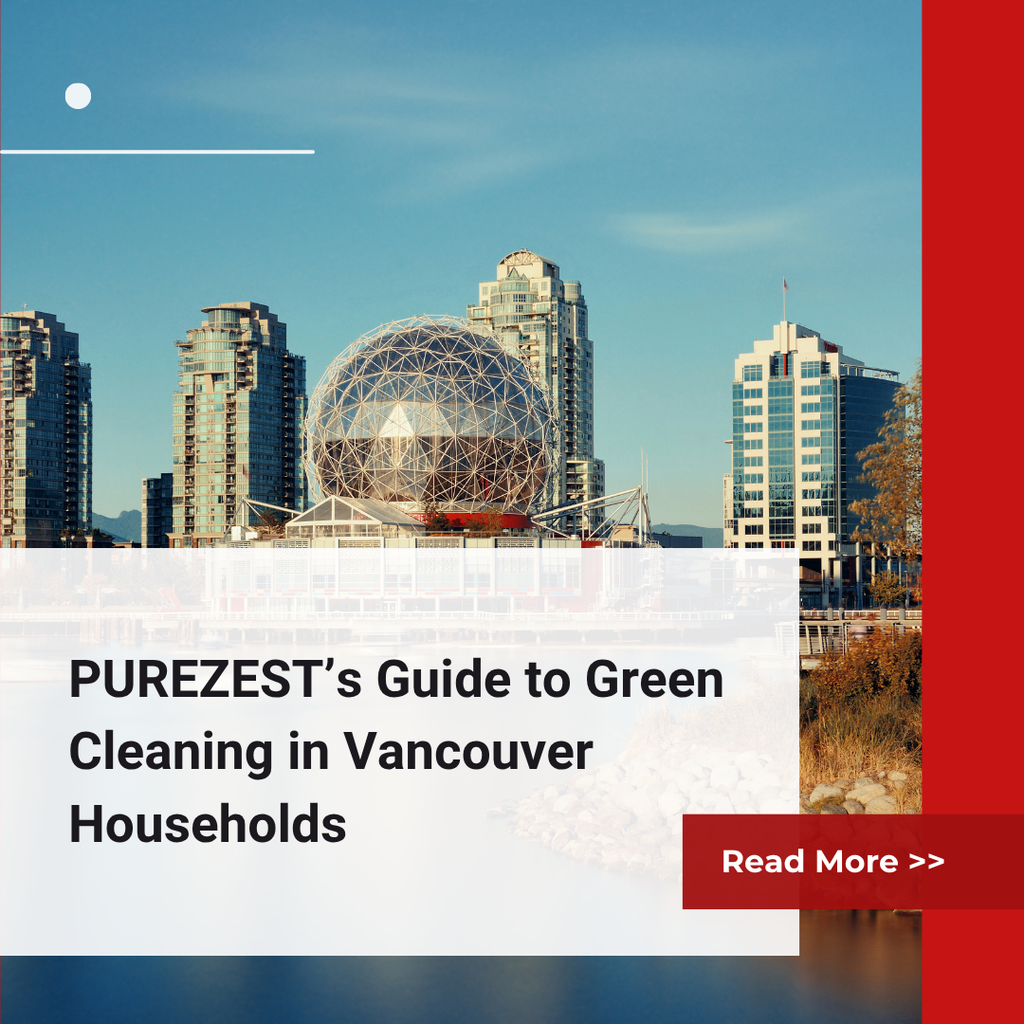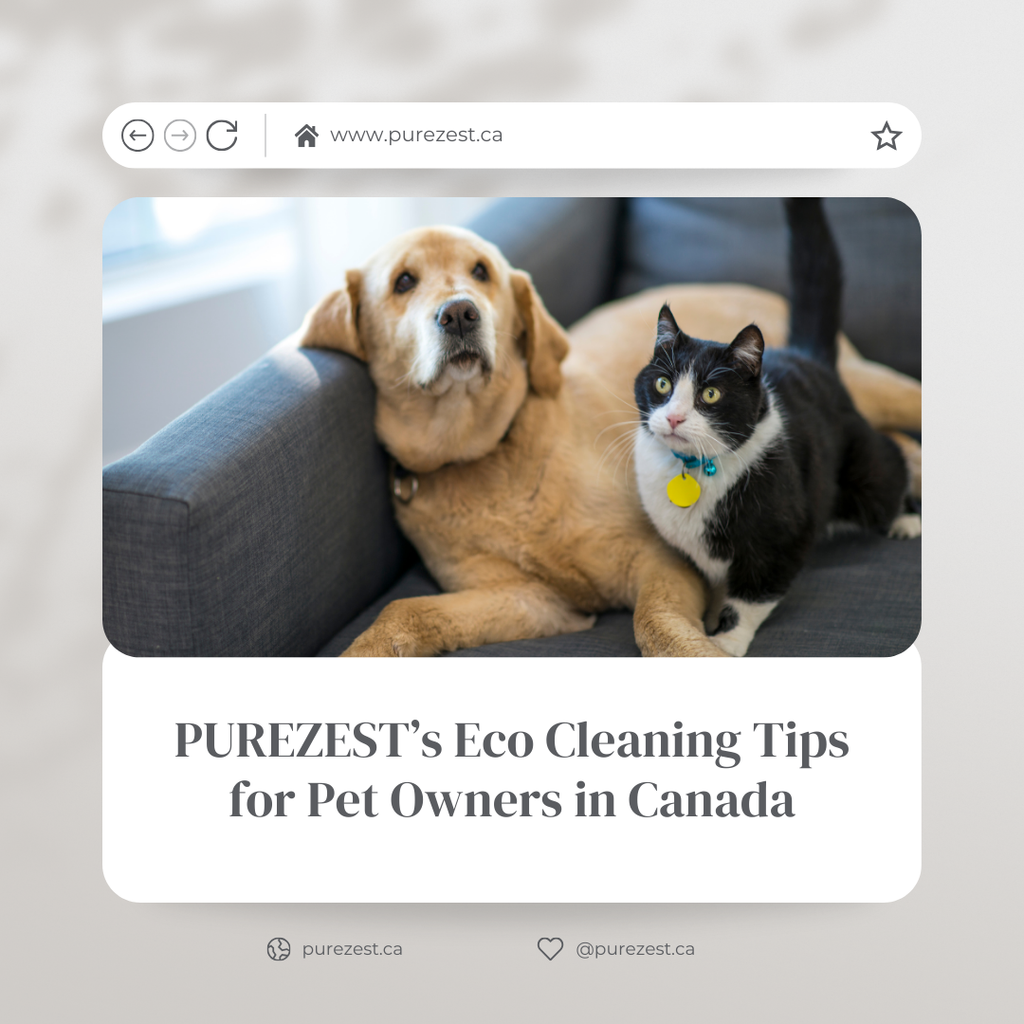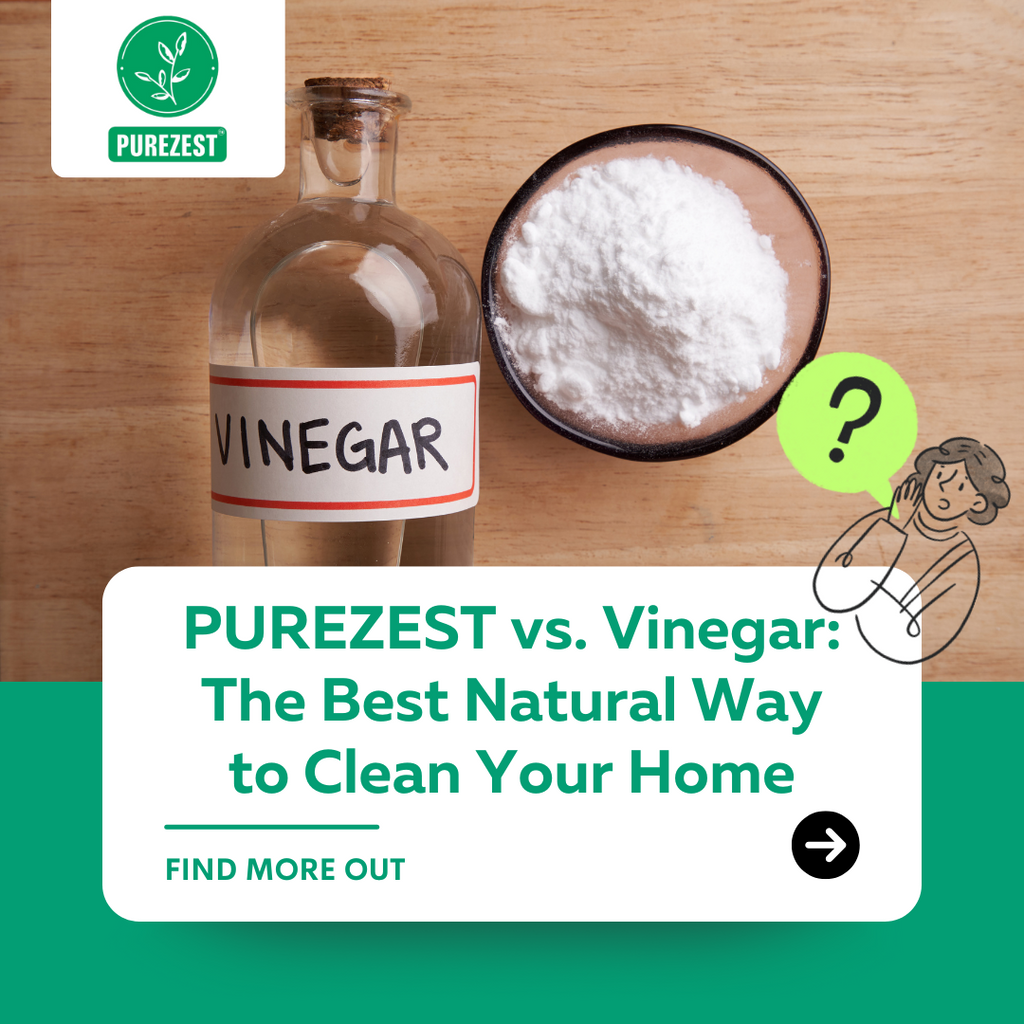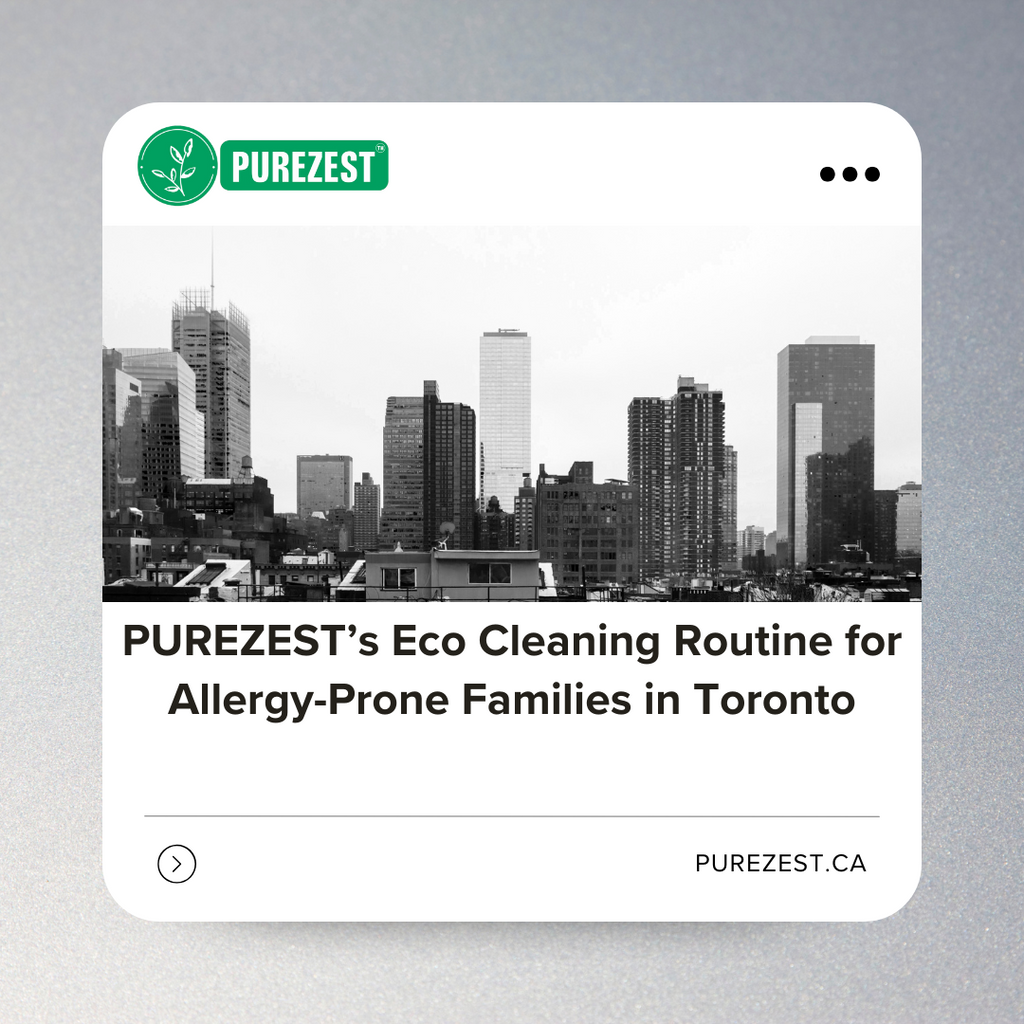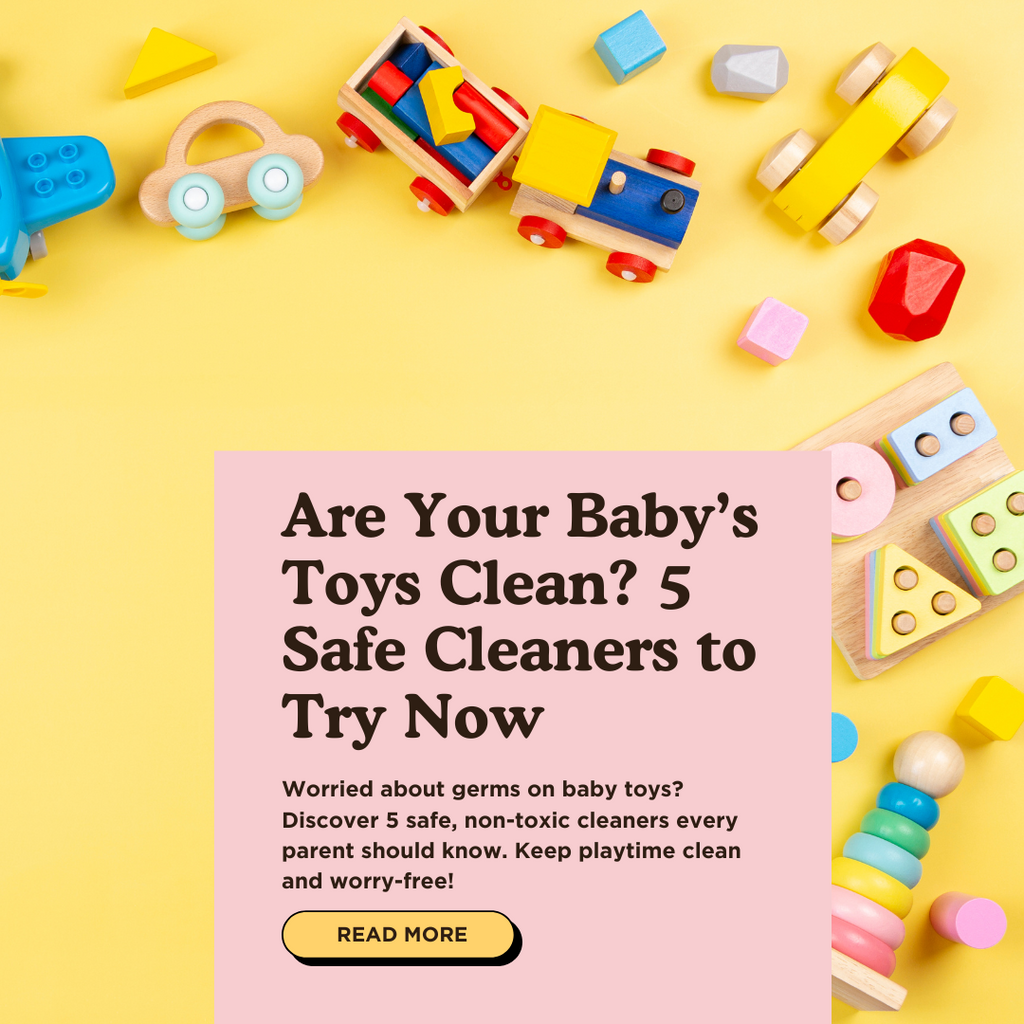
Are Your Baby's Toys Really Clean? 5 Non-Toxic Cleaners Every Parent Needs to Know About

Introduction
You wipe down the kitchen counter, wash your baby’s clothes with care, and sanitize pacifiers. But what about those colourful toys scattered across your living room floor? From teething rings to plastic trucks, your baby’s toys go everywhere—and so do the germs.
Most parents don't realize that the cleaners they use to “sanitize” toys can leave behind residues that are anything but baby-friendly. In this guide, we’ll uncover the risks and introduce 5 non-toxic cleaners every Canadian parent should know about. Spoiler alert: PUREZEST is on the list, and for good reason.
What Makes a Cleaner Non-Toxic?
Understanding "Non-Toxic"
"Non-toxic" doesn’t just mean safer—it means peace of mind. A non-toxic cleaner contains no harmful chemicals that can irritate skin, harm lungs, or disrupt hormones.
Safe Ingredients to Look For
Look for ingredients like:
-
Plant-based enzymes
-
Natural essential oils
-
Vinegar
-
Baking soda
-
Coconut-derived surfactants
Ingredients to Avoid at All Costs
Avoid anything with:
-
Bleach
-
Ammonia
-
Synthetic fragrances
-
Parabens
-
Phthalates
The Dangers of Traditional Toy Cleaners
Chemical Residues
Most commercial cleaners leave a residue that doesn’t just vanish. Babies explore with their mouths, meaning those residues can go straight into their bodies.
Skin Irritation and Allergies
Harsh cleaners can cause rashes or even trigger eczema in sensitive-skinned little ones.
Inhalation Risks for Babies
Aerosol sprays and artificial scents may cause respiratory issues in babies who are still developing their lungs.
Safe Cleaning Methods for Different Types of Toys
Plastic Toys
Use a diluted non-toxic multipurpose cleaner or dish soap. Rinse and air dry.
Wooden Toys
Wipe with a slightly damp cloth using a mild enzyme-based cleaner like PUREZEST. Avoid soaking.
Fabric and Plush Toys
Use a gentle, fragrance-free detergent or DIY spray with castile soap. Machine wash if allowed.
Top 5 Non-Toxic Cleaners Every Parent in Canada Should Know
1. PUREZEST Multipurpose Cleaner
This herbal and enzyme-based cleaner breaks down grime without harsh chemicals. Ideal for high-touch toys and surfaces your baby uses daily.
2. PUREZEST Dish Soap
Mild, effective, and safe for cleaning teething rings, rattles, and more. Enzymes do the work while you stay worry-free.
3. Vinegar and Water Spray
Great for disinfecting hard toys, though the smell might not be for everyone.
4. Baking Soda Paste
Perfect for sticky messes and deodorizing toys, especially plush ones.
5. Castile Soap Solution
A gentle, olive-oil-based option you can use on almost anything.
Why PUREZEST is a Game-Changer for Canadian Parents
Herbal and Enzyme-Based Formula
PUREZEST products are crafted to clean naturally—using enzymes that continue working even after you’ve wiped them off. That's next-level clean.
Canadian Climate and Indoor Play
With long winters, indoor toys see heavy use. PUREZEST ensures your baby's indoor world stays clean and chemical-free.
Safe for Daily Use Around Babies
No harsh fumes, no risky residues—just plant-powered cleaning you can feel good about.
How Often Should You Clean Baby Toys?
High-Contact Toys
Daily or every other day, especially those that hit the floor often.
Teething Toys
Every single day—no exceptions.
Outdoor Toys
Once a week or after every outdoor play session.
DIY vs Store-Bought Cleaners: What’s Better?
DIY is great for occasional cleaning, but when you're juggling parenting duties, products like PUREZEST save time while delivering consistent, safe results.
How to Store and Sanitize Non-Toxic Cleaners Safely
Keep all cleaners out of reach. Even if they're non-toxic, they're not snack-friendly. Label your DIY mixes with dates and store PUREZEST bottles upright, away from heat.
Simple Cleaning Schedule for Busy Parents
-
Monday: Teething toys
-
Wednesday: Plastic toys
-
Friday: Plush toys
-
Sunday: Toy bins and play areas
Set reminders on your phone—it takes 5 minutes, tops.
Tips for Teaching Kids Toy Hygiene Early On
Make it a game! Give them a soft cloth and let them “clean” with water. As they grow, show them how to spray and wipe with mild cleaners like PUREZEST.
Conclusion
Cleaning your baby’s toys isn’t just about tidiness—it’s about their health, safety, and development. Non-toxic cleaners like PUREZEST Multipurpose Cleaner and Dish Soap make it easy for Canadian parents to ditch the chemicals and embrace natural, enzyme-powered solutions. Whether you're wiping down a beloved stuffed bear or a plastic giraffe, you can trust PUREZEST to clean effectively and gently.
So next time you wonder if those toys are truly clean, reach for a bottle that works with nature, not against it.
FAQs
1. Can I use PUREZEST on teething toys?
Yes! PUREZEST Dish Soap is perfect for washing teething toys. Just rinse thoroughly with clean water.
2. Are natural cleaners really effective?
Absolutely. Enzyme-based cleaners break down germs and grime without harming your baby or the environment.
3. How do I know a product is non-toxic?
Check the label for plant-based ingredients, enzyme cleaners, and certifications like “biodegradable” or “eco-friendly.”
4. What’s the safest way to clean plush toys?
Use a gentle cleaner or detergent and wash in cold water. Air dry completely before giving it back to your child.
5. Can I make my own toy cleaner at home?
Yes! Mix equal parts vinegar and water or use diluted castile soap. But for quicker, effective results, PUREZEST is a great alternative.

